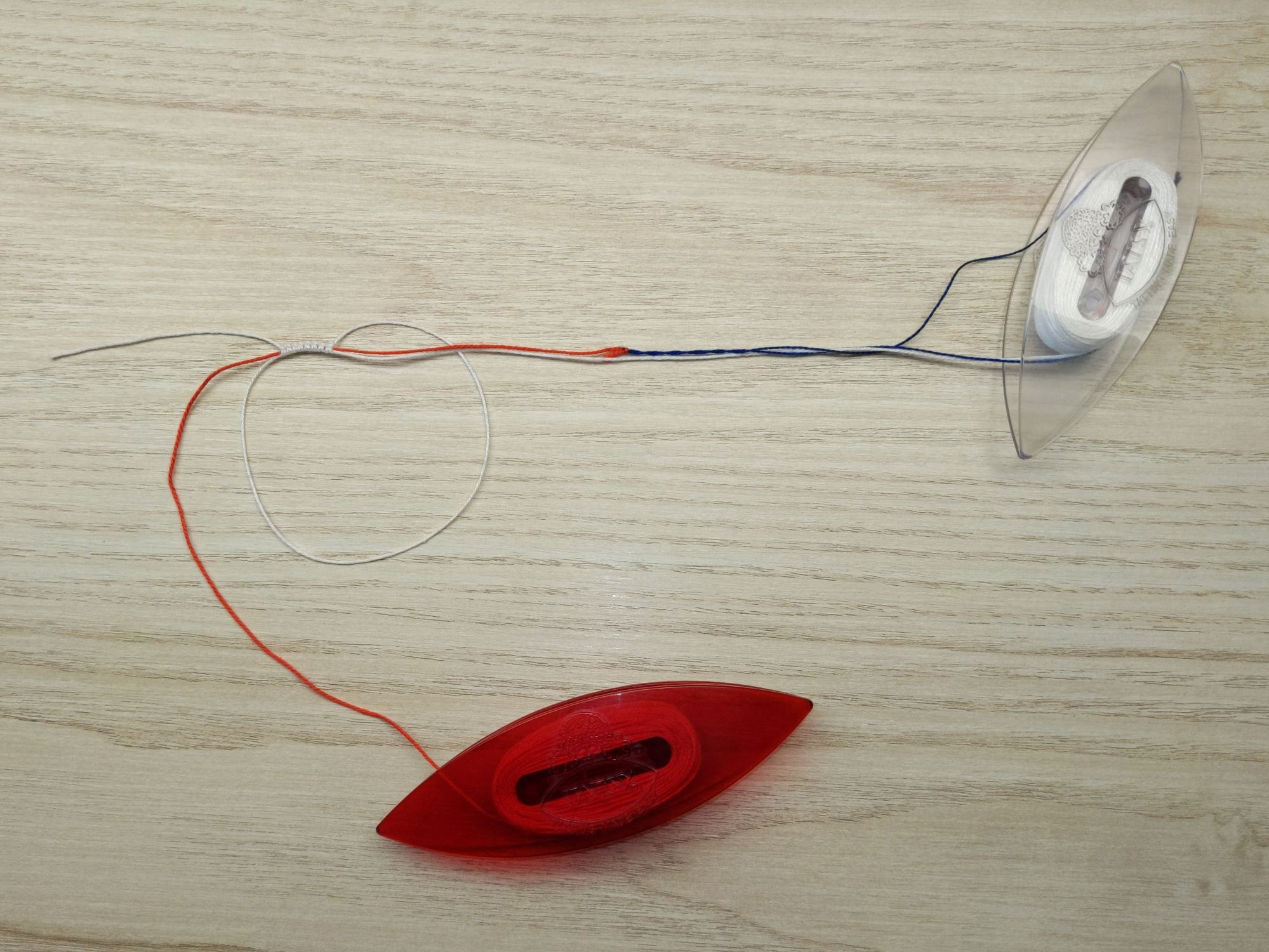Instructies schrijven, dat is even andere koek zeg!
Een hele uitdaging, maar het trucje dat ik al jaren toepas wil ik toch echt met de wijde wereld delen want, ik heb het tot nu toe nog nergens anders gezien! Dat is toch best bijzonder, ook al ben ik vast niet de eerste en enige die dit trucje toepast.
Uitleg vind je onder de Engelse introductie, in het Nederlands en Engels, en met plaatjes.
English
Tatting over ends; a new method?
So this is quite the diversion from my usual posts: I’m writing instructions in this one!
It’s quite the challenge to write instructions, but I really want to share this method, because I haven’t seen it anywhere else (yet)!
Although I’m sure I’m not the first or only one.
So here goes!
(in Dutch and English)
Allereest werkt dit trucje het beste met traditionele spoeltjes (die zonder een klosje) en dk staat voor dubbele knoop.
First of, this method works best with post shuttles, and ds stand for a double stitch.
1: Knoop een lus met wat rest draad, die ruim om je spoeltje past.
1: Tie a loop with a bit of scrap thread that fits nicely around your shuttle with a bit of room to spare.
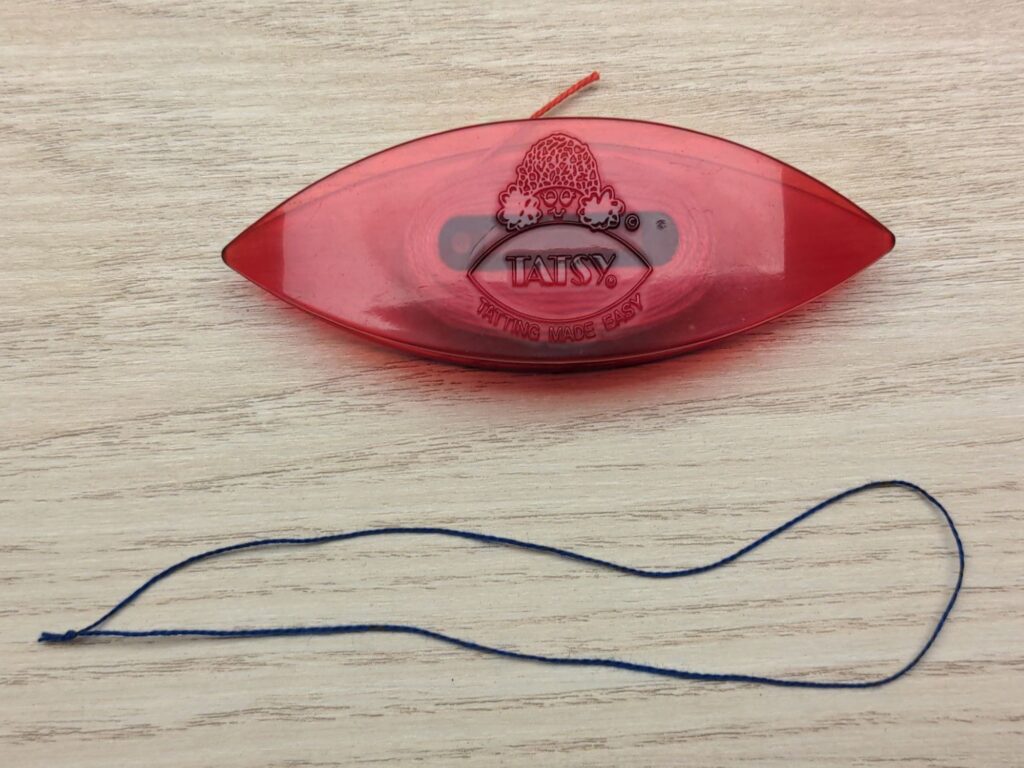
2: Vinger frivolité 1dk met de lus ongeflipt op het weg te werken eindje.
2: Finger tat 1 ds unflipped with the loop on the to be hidden end.
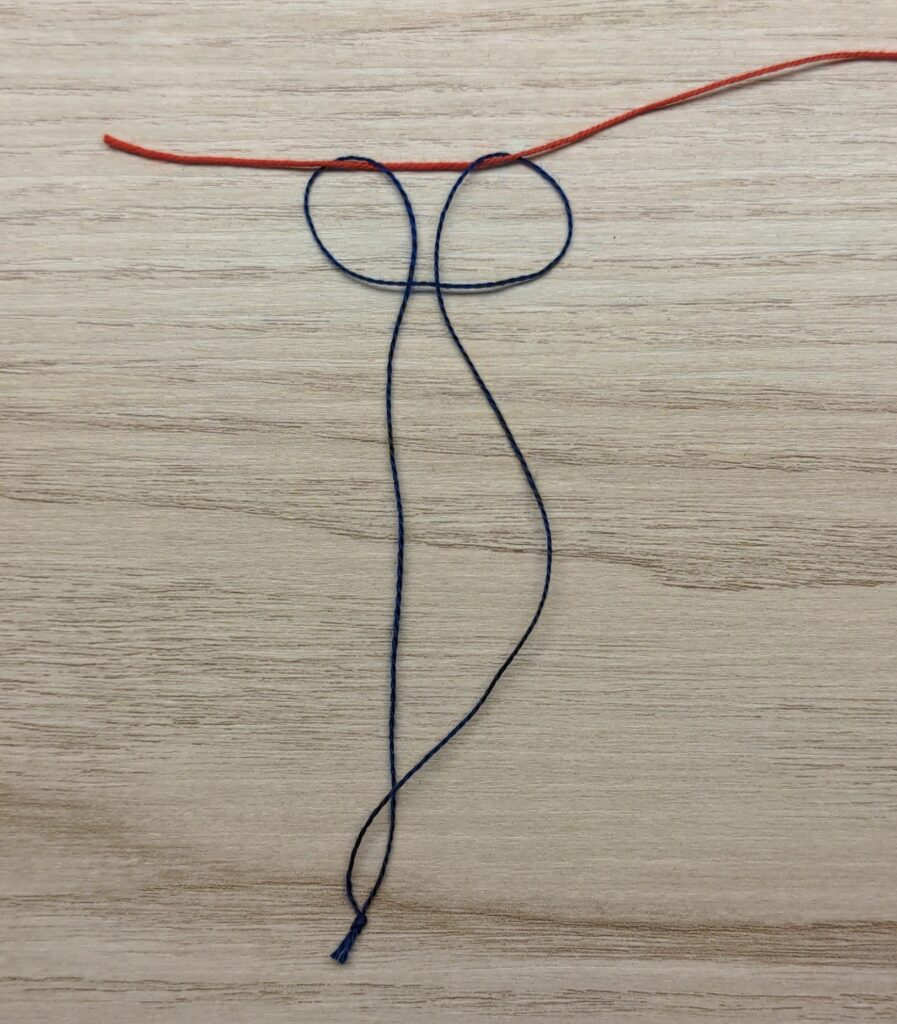
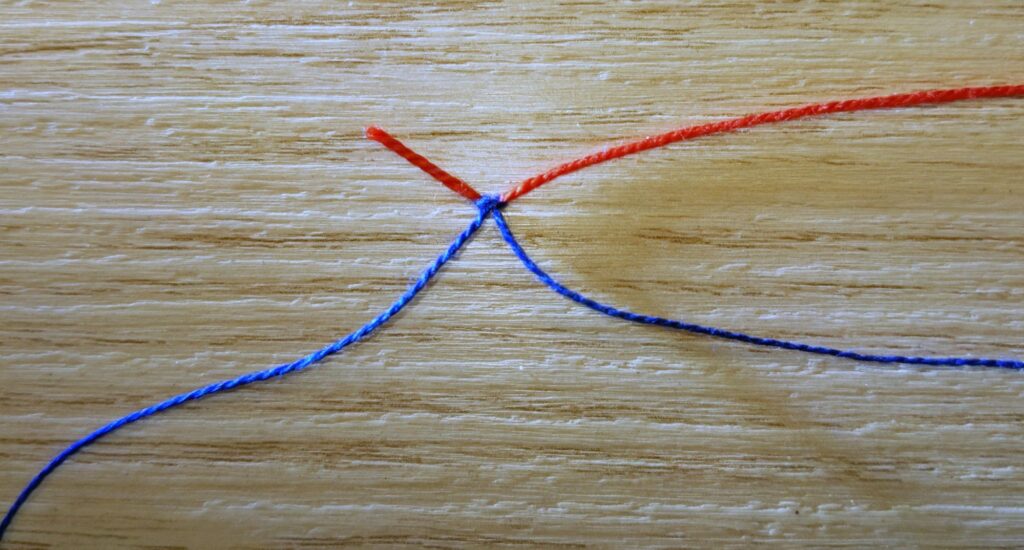
3: Flip nu deze dk door de lus strak te trekken.
3: flip this ds by pulling the loop taut.
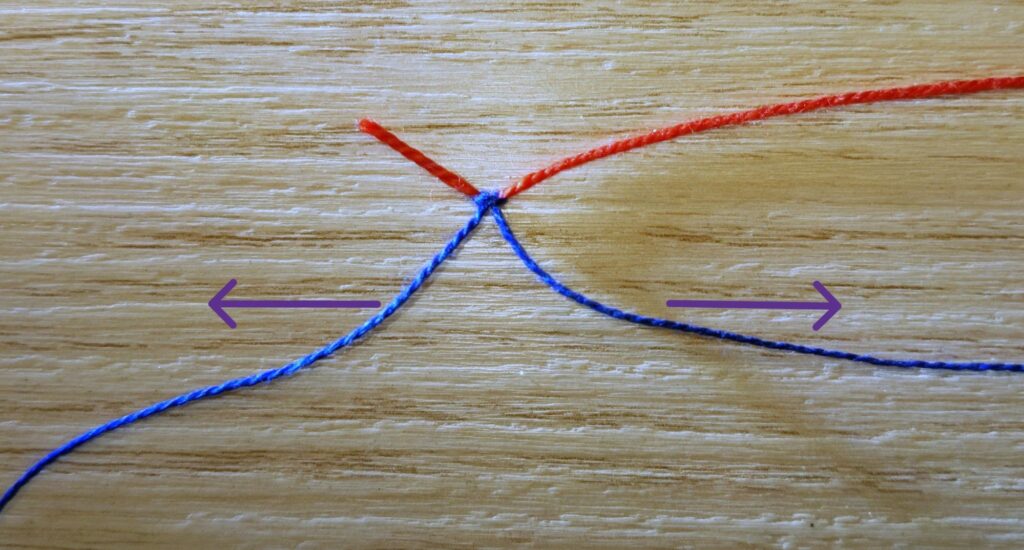
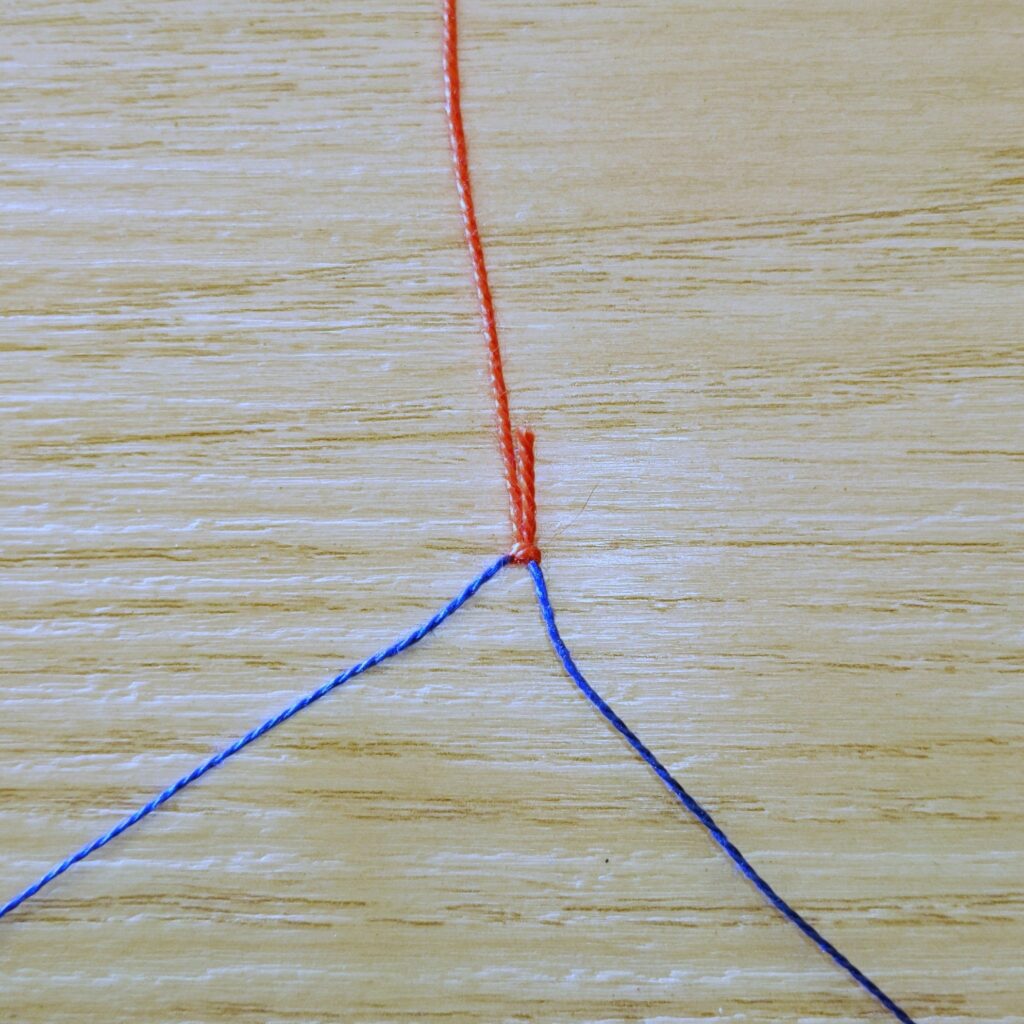
4: Doe de lus om het spoeltje met daarop de kerndraad van het volgende te knopen onderdeel, waarbij je de lus en kerndraad ongeveer op dezelfde lengte houd en knoop dit onderdeel.
4: Put the loop on the shuttle with the core-thread for next part that needs to be tatted, keeping the loop and core-thread about the same length. Tat this part.
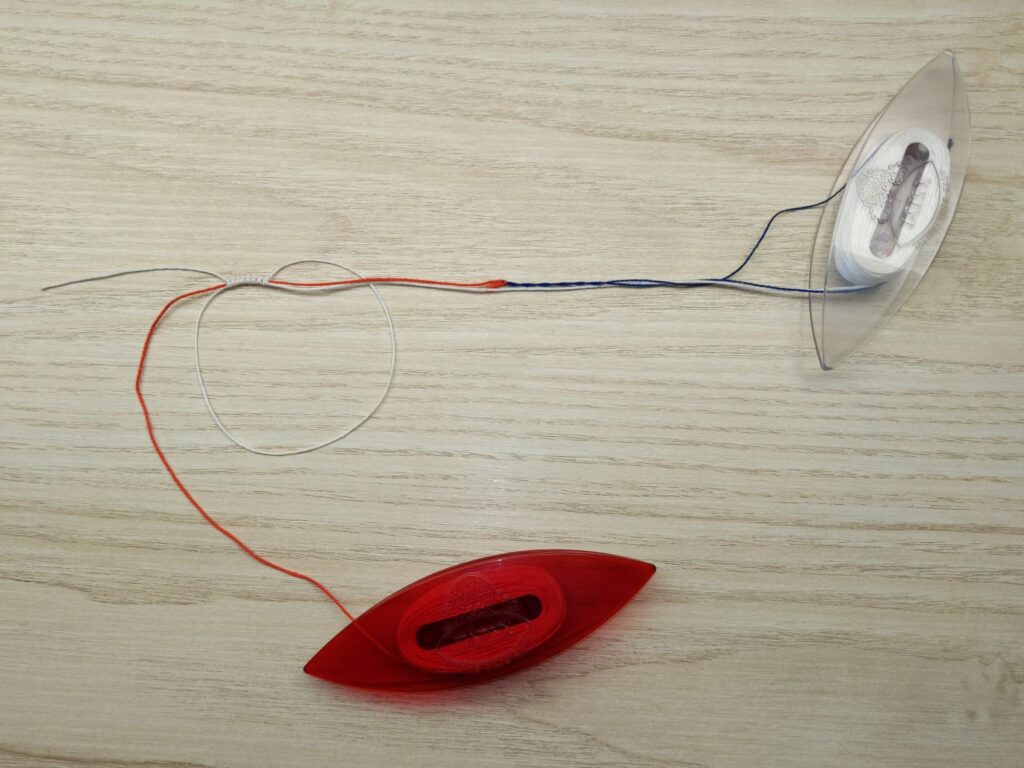
5: Wanneer je klaar bent met het knopen van dat onderdeel (of wanneer je genoeg dk’s hebt gemaakt) haal je de lus van het spoeltje en het draadeindje en kan je zoals gewoonlijk doorgaan.
5: When you’ve tatted that next bit (or when you’ve made enough ds), you take the loop from the shuttle and thread and, and continue as usual.
